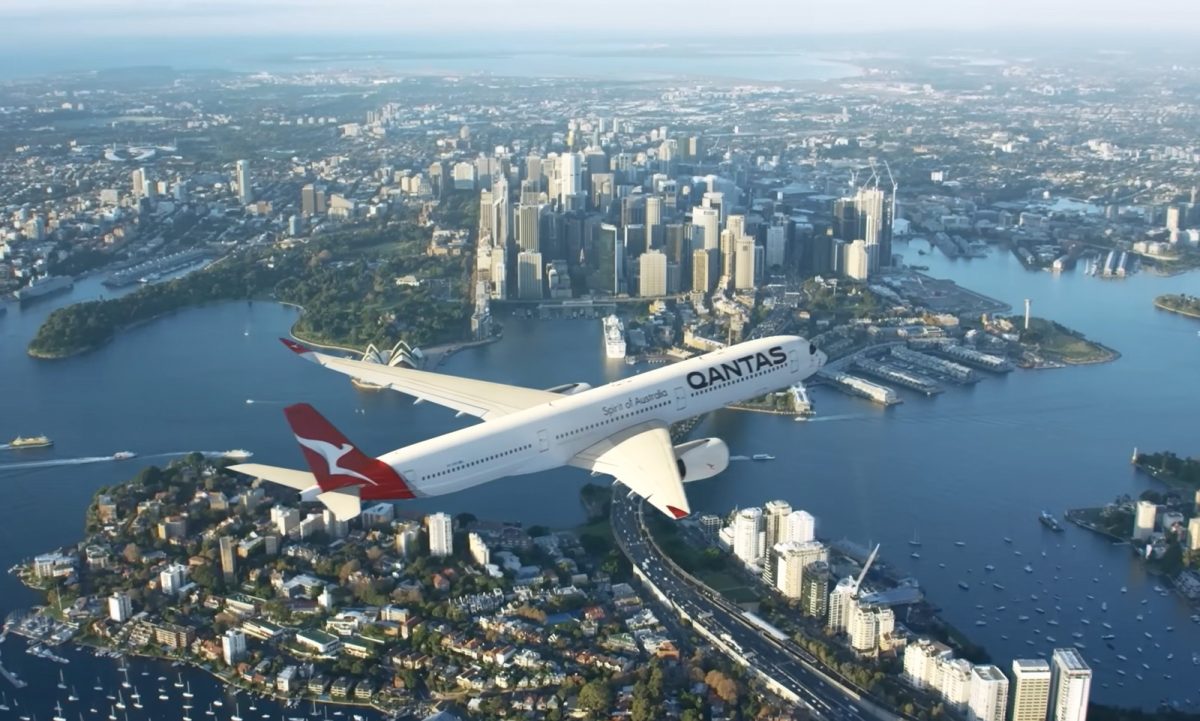
The Qantas Airbus A350 will feature premium low-density cabins with just 238 seats. Images: Qantas.
Hot on the heels of launching non-stop flights from Perth to Paris last week, Qantas has unveiled its cabin seating and lighting designs for its new Airbus A350-1000 ultra-long-haul airliners, which are expected to enter service from 2026.
Twelve A350-1000s were ordered by the Flying Kangaroo in 2022 under the airline’s ambitious Project Sunrise, which aims to conduct non-stop 20-plus-hour services to London and New York from Australia’s east coast. The A350 was selected after a five-year process to find an aircraft capable of conducting such missions.
To maximise comfort on these ultra-long-haul flights, the A350s will be fitted with premium low-density cabins with just 238 seats, 40 per cent of which will be premium seating, in a spacious layout. By comparison, shorter-haul A350s can be fitted with up to 350 or more seats.
Of the 238 seats, six will be enclosed first-class suites in a 1-1-1 configuration across the cabin, 52 will be business-class suites in a 1-2-1 design, 40 will be premium economy seats in a 2-4-2 format, and 140 will be economy seats in a 3-3-3 layout.
As a former regular traveller, I can’t think of anything worse than spending 20 or more hours in an economy-class seat. But the failure of previous attempts to conduct such services with all-premium cabins – such as Singapore Airlines’ former non-stop 18-19-hour services to Los Angeles and New York using A340s with just 100 business-class seats – shows that ‘’bums on seats’’ is what makes such services economically viable.
There will also be a Wellbeing Zone, which Qantas describes as a dedicated space for movement and premium refreshments. Positioned between the premium economy and economy cabins, it will feature sculpted wall panels and integrated stretch handles, a guided on-screen exercise program, and a ‘‘hydration station’’ with a range of refreshments.
But with the prevalence of clear-air turbulence episodes in recent months resulting in shocking injuries for passengers not wearing seatbelts, the practicality of such spaces is questionable.
Another feature of the cabins will be a unique lighting system designed to minimise jetlag and improve customer wellbeing. The lighting design is the result of 150 hours of testing in Hamburg, where representatives from Qantas, Airbus, the University of Sydney’s Charles Perkins Centre and Caon Design Office created and tested hundreds of lighting patterns in an Airbus A350 cabin mock-up.
The airline says it and the Charles Perkins Centre had released preliminary findings on how to potentially reduce the impacts of jetlag by reshaping the inflight travel experience, based on research conducted during test flights for Qantas’ Project Sunrise program.
It says, based on modelling of circadian rhythms, the Charles Perkins Centre advised the optimal spectral irradiances for light to promote circadian adaption, sleep and wake, and these were tested and refined at the lighting workshops in Hamburg.
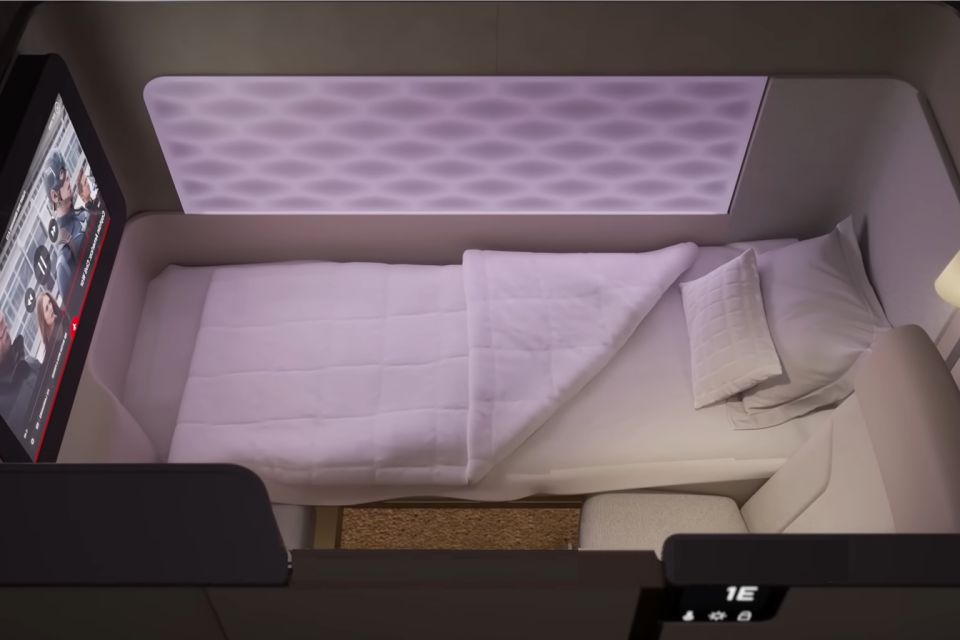
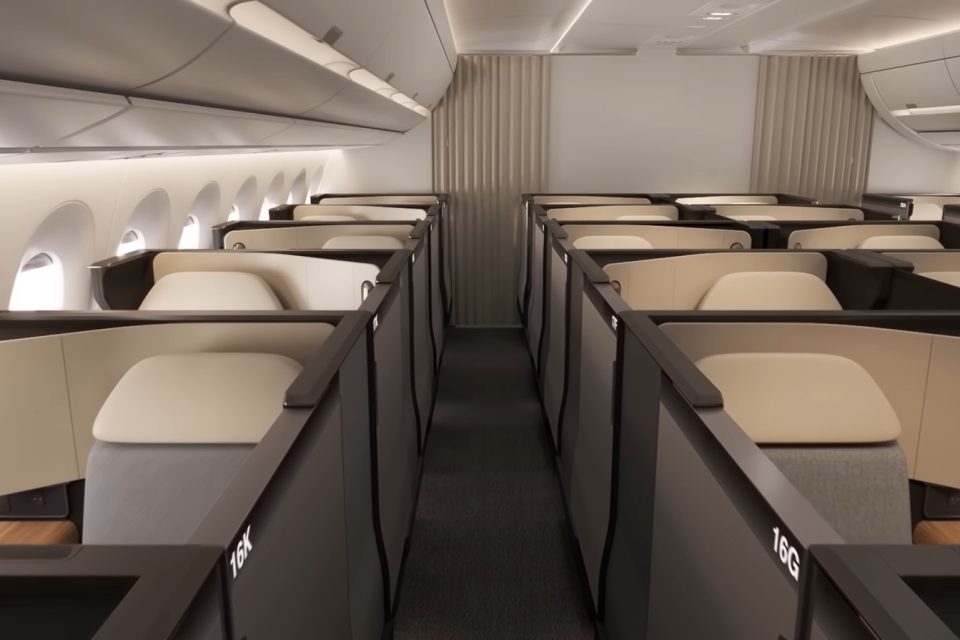
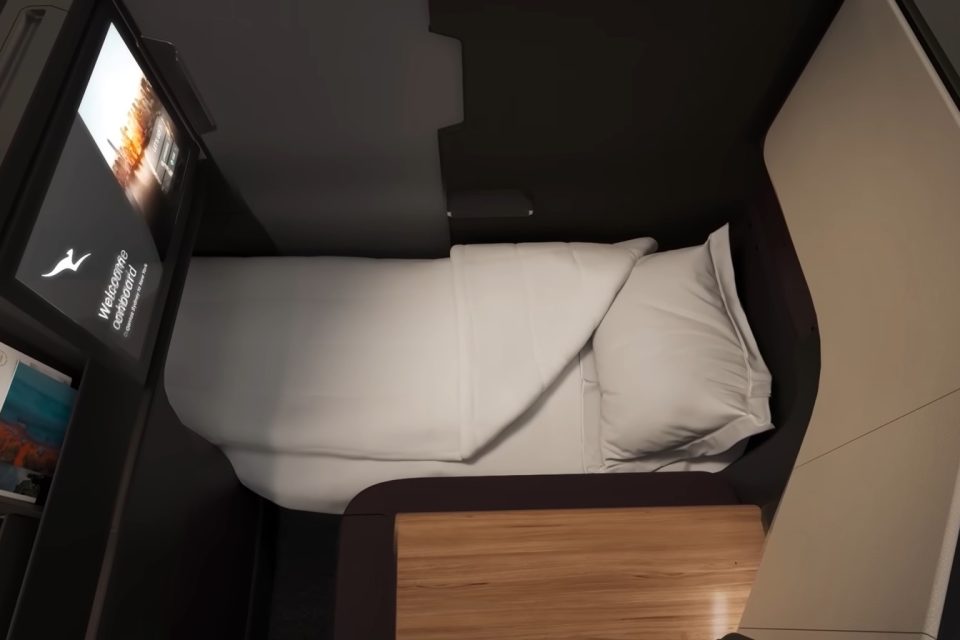
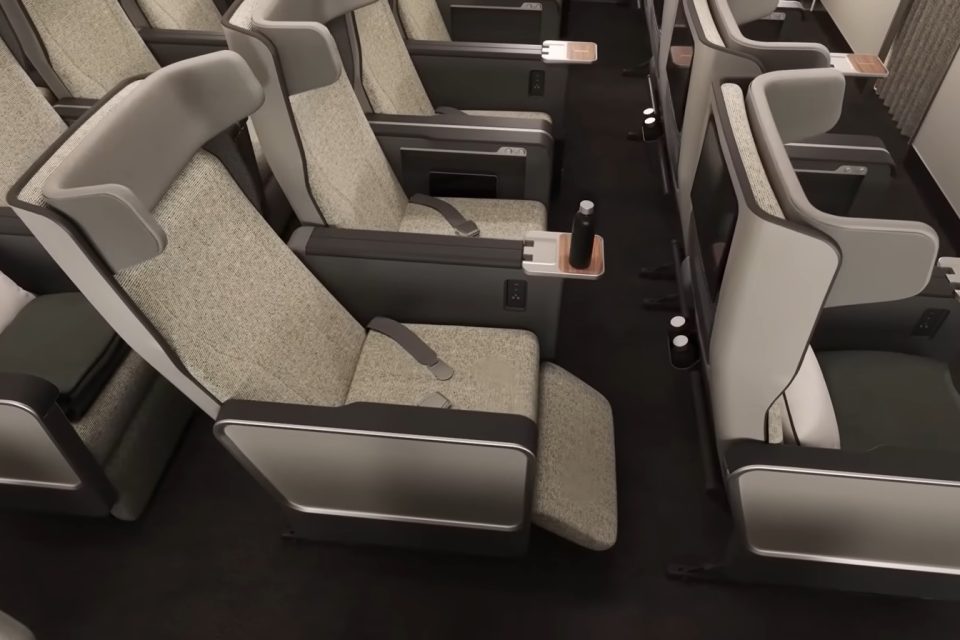
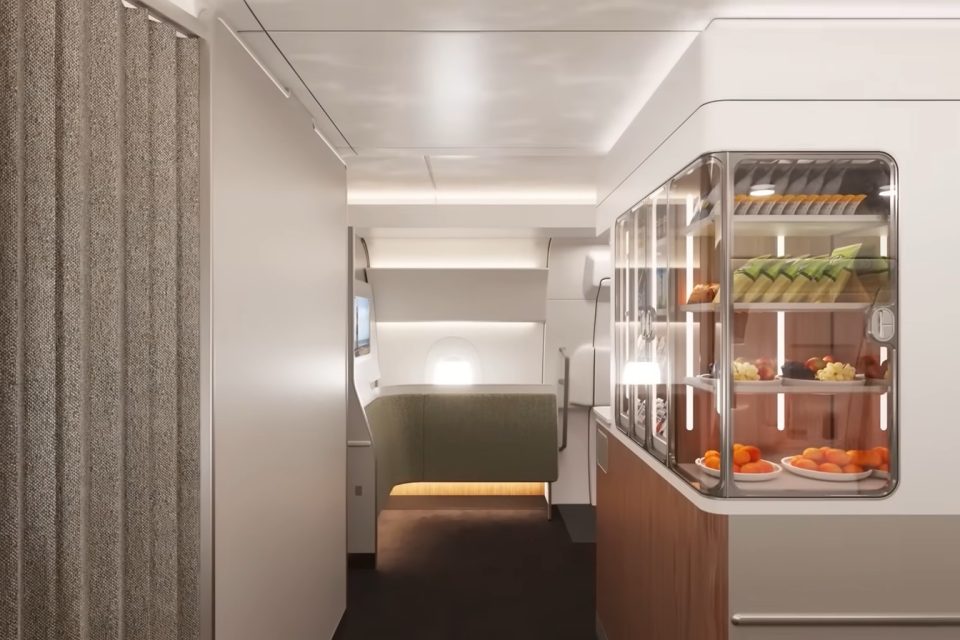
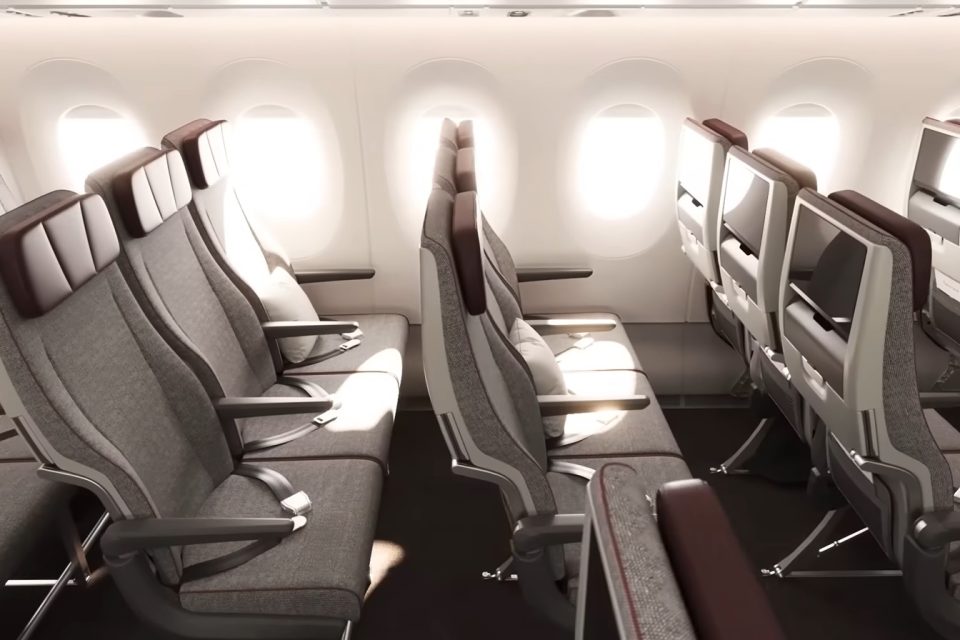
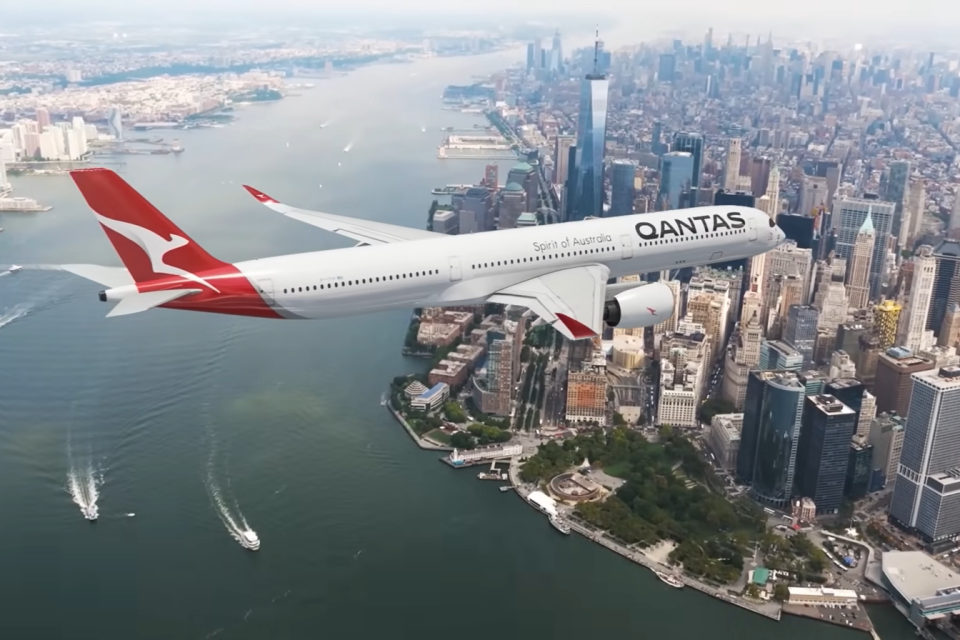
Qantas International CEO Cam Wallace said the scientifically informed lighting design was another critical component of the preparation for Project Sunrise flights.
“These world-first flights have been an opportunity for us to work with experts and build on our experience of long-haul flying to rethink the inflight experience with a focus on customer wellbeing and combating the effects of jetlag,” he said.
“One of the things that was clear from the research is the importance of light cycles and brightness in setting the body clock, and that was the basis of this testing.
“Combined with the design of the cabins, specialised meal planning, and the movement program, this unique lighting sequence will help improve our customers’ comfort in the air and minimise their jetlag when they arrive at their destination.”
Australian industrial designer David Caon said the lighting workshops followed more than five years of cabin design with Qantas to maximise customer wellbeing inflight.
“Aircraft lighting doesn’t cross the mind of most travellers but the external light cycle of night and day has more impact on our circadian rhythm and the impact of jetlag than any other factor,” he said.
“The Charles Perkins Centre provided us the ideal spectral irradiance for wake and sleep and these workshops were about crafting a beautiful ambiance, which was guided by that science and exceptional design principles.
“Using the unique light of the Australian landscape and contemporary interior design as inspiration, we’ve been able to curate an immersive suite of more 12 different lighting scenarios and transitions to help travellers best adjust to their destination time zone and improve their inflight wellbeing.
“Every part of the Project Sunrise A350 cabins was specially designed for Qantas, and creating this tailored lighting sequence is one of the final pieces of the puzzle.”













